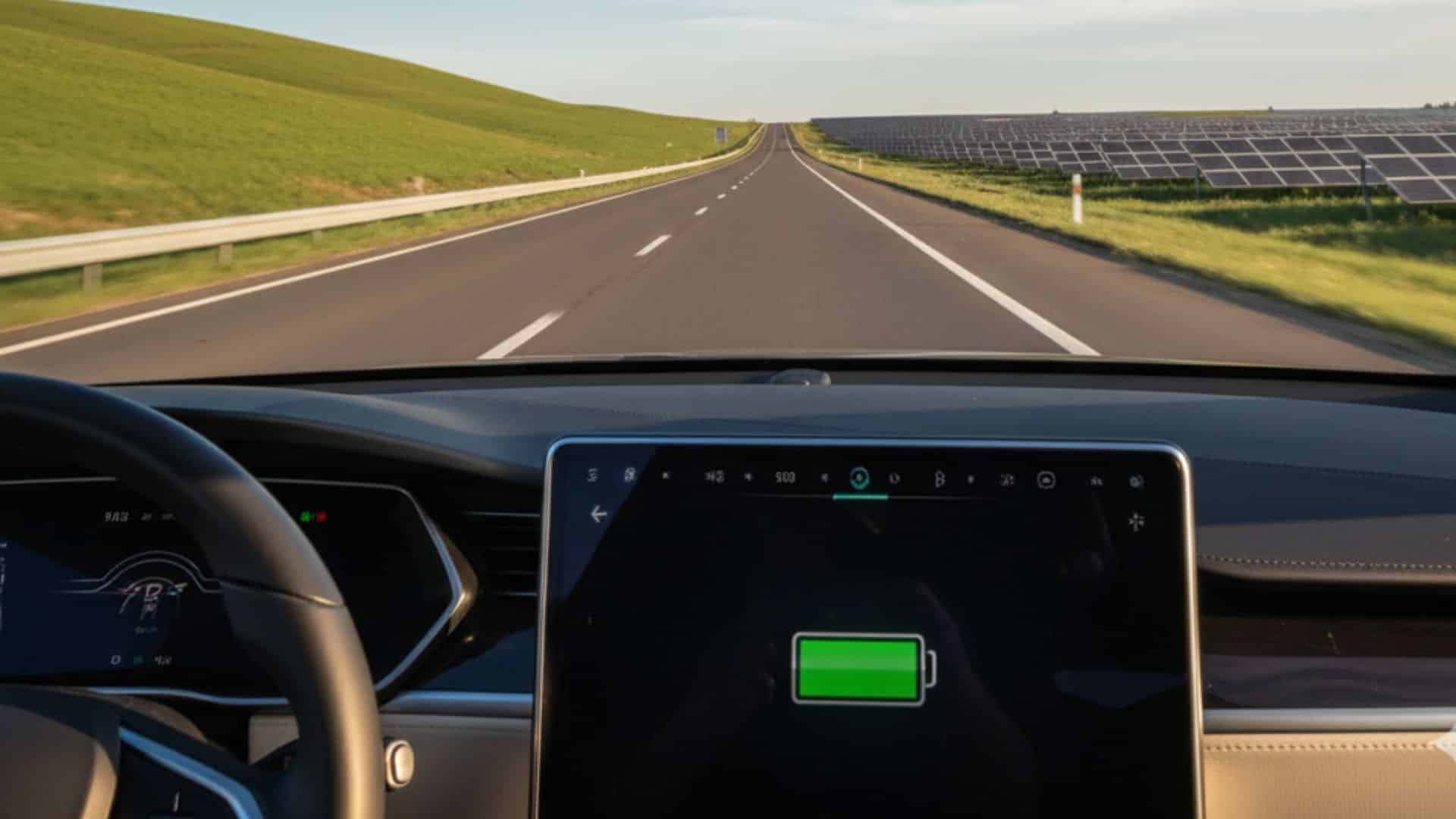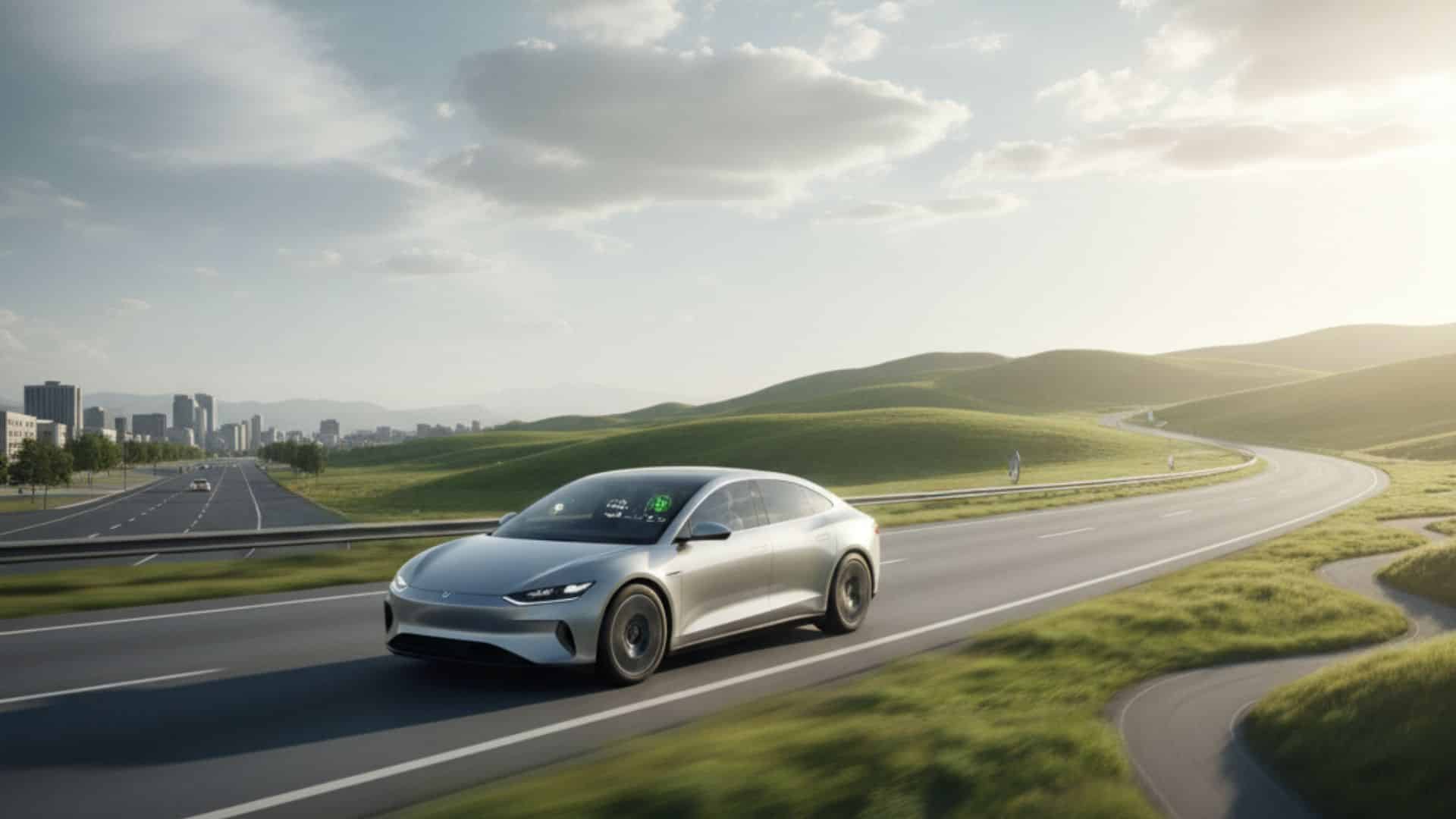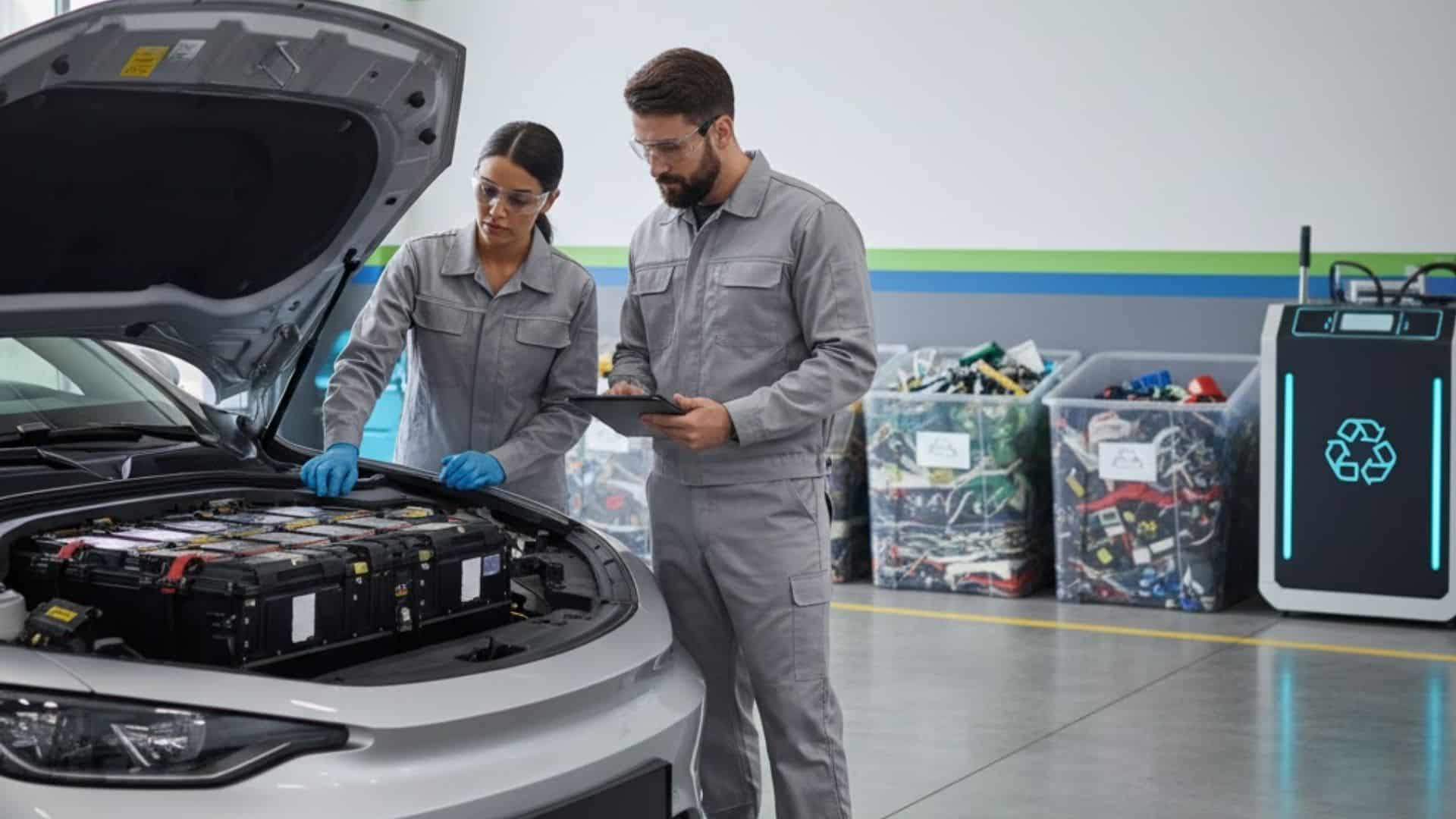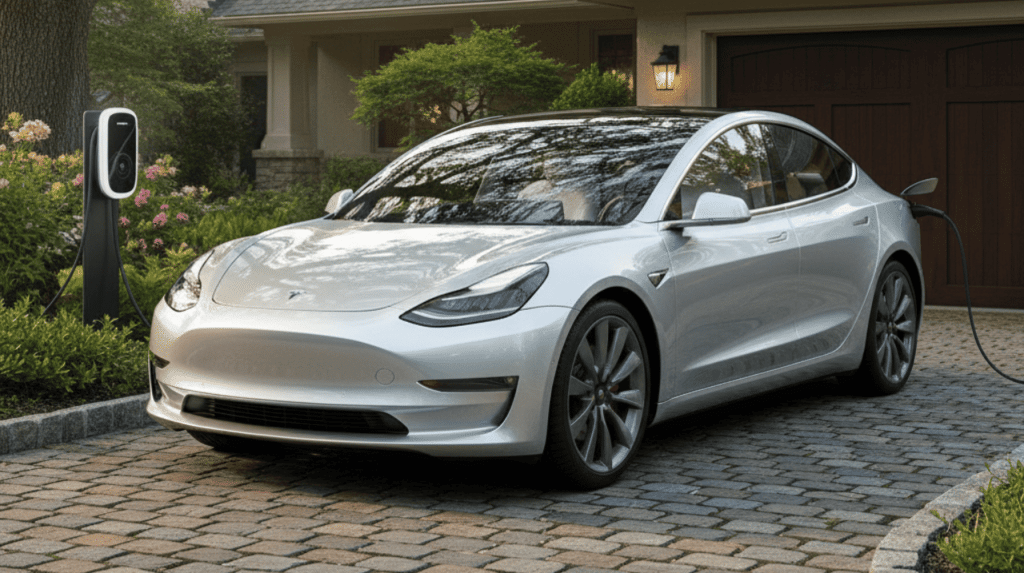Worried your electric car might die halfway through your daily commute or weekend road trip? That fear keeps many drivers stuck with gas guzzlers even though EVs offer amazing benefits for your wallet and the planet.
Understanding how long does an electric car battery last while driving removes the mystery and anxiety around range completely. Most people overestimate how much driving they actually do each day and underestimate what modern EVs can deliver.
I’m here to break down everything affecting your battery’s performance so you can make smarter decisions with confidence.
You’ll find exactly what impacts your range and learn practical ways to maximize every mile you drive. By the end, you’ll know if an EV fits your lifestyle perfectly.
This information is for educational purposes only. Always consult your vehicle manufacturer or a certified mechanic before making any decisions about your car.
What Is an EV Battery and How Does It Work?
An EV battery is a rechargeable power pack that stores electricity to run an electric vehicle’s motor instead of gasoline. Most electric cars use lithium-ion batteries, the same technology found in your smartphone, but much bigger and more powerful.
These batteries store electrical energy in chemical form and release it when you press the accelerator pedal. The energy flows from the battery to the electric motor, which converts it into spinning power that turns the wheels.
Unlike a gas car that burns fuel in an engine, an EV battery simply releases stored electricity cleanly and quietly.
When you charge the battery, electricity flows back in and gets stored again for your next drive. This process can repeat thousands of times before the battery needs replacement.
How Long Does an Electric Car Battery Last While Driving?


Electric car batteries typically last between 200 and 400 miles on a single full charge depending on your vehicle model.
Budget-friendly EVs like the Nissan Leaf get around one hundred fifty miles, while mid-range models like Tesla Model 3 reach two hundred seventy-two miles. Luxury electric cars like Lucid Air push past four hundred miles per charge, matching or beating many gas cars.
Your actual driving time on a full charge usually ranges from four to six hours on highways at steady speeds.
City driving often extends battery life because regenerative braking captures energy back when you slow down or stop frequently.
Highway driving drains batteries faster since you maintain high speeds continuously without many chances to recover energy through braking.
Factors That Affect EV Battery Range While Driving


Several factors determine how far you can actually drive on a single charge beyond just your battery size alone. I’ve identified the six key factors that directly impact your EV’s real-world driving range:
1. Driving Speed and Style
Your driving habits directly impact how far your EV battery will take you on a single charge every day. Aggressive acceleration from stoplights or rapid lane changes forces the motor to work harder and drain power quickly.
Maintaining steady speeds between fifty-five and sixty-five mph gives you the best range on highways. Constant speeding above seventy-five mph can reduce your total range by twenty to thirty percent compared to moderate speeds.
2. Temperature and Climate
Extreme temperatures force your EV battery to work harder just to maintain proper operating conditions for peak performance. Cold weather below thirty-two degrees can reduce your driving range by twenty to forty percent because batteries struggle in freezing conditions.
Hot weather above ninety-five degrees also decreases efficiency as the battery cooling system uses extra power constantly. Your battery performs best in mild temperatures between sixty and eighty degrees Fahrenheit for optimal range.
3. Terrain and Elevation
Driving uphill forces your electric motor to use significantly more battery power than cruising on flat smooth roads. Mountain routes or hilly neighborhoods can reduce your total range by fifteen to twenty-five percent compared to level terrain.
Going downhill actually helps recharge your battery through regenerative braking that captures energy from gravity and momentum. Flat highways provide the most predictable and efficient battery consumption for planning longer trips with confidence.
4. Vehicle Load
Carrying extra weight in your EV makes the motor work harder and drains your battery faster than driving alone. Each additional one hundred pounds of passengers or cargo can reduce your range by one to two percent.
Fully loading your vehicle with five passengers and heavy luggage noticeably impacts how far you can drive total. Roof racks and cargo carriers create wind resistance that further decreases efficiency even when they’re empty containers.
5. Battery Health and Age
EV batteries naturally lose some capacity over years of use just like your smartphone battery weakens with age. Most electric car batteries retain eighty to ninety percent of their original capacity after eight to ten years.
Older batteries can’t store as much energy, meaning your maximum range gradually decreases as your car ages. Battery degradation happens faster if you frequently fast-charge or let the battery drop to zero percent regularly.
6. Use of AC, Heating, and Other Electronics
Running your air conditioning or heater pulls significant power directly from your battery while you’re driving anywhere. Climate control can reduce your total driving range by ten to twenty percent, depending on outside temperature extremes.
Heating uses more battery power than cooling because electric heaters work harder than air conditioning compressors do. Using seat warmers instead of cabin heat saves battery power while keeping you comfortable during cold-weather drives.
How Long Do Electric Car Batteries Last in Total?


Electric car batteries typically last between 10 and 20 years or 100,000 to 300,000 miles before needing replacement.
Your battery won’t suddenly die, but it will gradually lose capacity over time, storing slightly less charge each year you own it. Most EV manufacturers protect you with warranties covering 8 years or 100,000 miles, whichever comes first, for peace of mind.
Tesla batteries often retain 90% capacity after 200,000 miles, showing impressive durability in real-world conditions.
Hyundai and Kia offer 10-year or 100,000-mile battery warranties, among the best coverage in the industry today. Proper charging habits and avoiding extreme temperatures help your battery last closer to twenty years.
Signs Your EV Battery Is Losing Capacity
Your EV battery will show clear warning signs when it starts losing significant capacity and needs attention soon. Here are the four main symptoms that indicate your battery health is declining and may need service:
- Reduced driving range per charge: Your car travels noticeably fewer miles on a full charge than it did when new or last year.
- Slower acceleration performance: The vehicle feels sluggish when you press the accelerator compared to how it performed when you first bought it.
- Longer charging times: Your battery takes significantly more time to reach full charge at the same charging station you normally use.
- Dashboard warning lights: Battery health warnings or system alerts appear on your dashboard indicating potential issues that need checking soon.
Sometimes a software update from your manufacturer can recalibrate the battery management system and temporarily improve performance slightly. Always get your battery checked by a certified technician if you notice any of these warning signs consistently.
Can You Extend the Lifespan of an EV Battery?
Taking proper care of your EV battery can add years to its lifespan and save you thousands in replacement costs. Here are five proven ways to keep your battery healthy and performing well for many years:
- Maintain optimal charge levels: Avoid charging to one hundred percent daily unless you need maximum range for a long trip ahead.
- Park strategically: Extreme heat and freezing cold damage battery chemistry faster so use garages or covered parking when possible.
- Charge during nighttime: Batteries charge more efficiently in cooler temperatures and put less stress on the cells during the process.
- Limit fast charging: Use regular Level 2 home charging for daily needs since frequent fast charging accelerates battery degradation over time.
- Update software regularly: Manufacturers constantly improve battery management systems through updates that optimize charging and extend battery life significantly.
Following these simple habits consistently helps your battery maintain capacity longer and reduces the chance of expensive early replacement. Most EV owners who practice these tips see their batteries perform well past the warranty period without major issues.
How EV Battery Range Compares Across Models
Different electric vehicles offer varying ranges and charging speeds based on their battery size and technology used. Here’s a comparison of popular EV models showing their real-world performance and charging capabilities:
| Car Model | Range (Miles per Charge) | Battery Capacity (kWh) | Charging Time (Fast Charger) |
|---|---|---|---|
| Tesla Model Y | 330 miles | 75 kWh | 30 minutes |
| Hyundai Ioniq 6 | 360 miles | 77.4 kWh | 25 minutes |
| Nissan Leaf | 150 miles | 40 kWh | 40 minutes |
| Chevrolet Bolt | 259 miles | 65 kWh | 30 minutes |
These ranges represent typical driving conditions and may vary based on your driving habits and weather conditions. Always check the manufacturer’s website for the most current specifications and pricing information for your specific region.
What Happens When an EV Battery Dies?


When your EV battery dies, it usually means it reached the end of its useful life, not just ran out of charge. An empty battery simply needs recharging at any charging station, while an end-of-life battery can’t hold enough charge anymore.
Replacing a dead battery costs between $ 5,000 and $20,000 depending on your car’s make and model. Most manufacturers offer trade-in credits for your old battery, which helps reduce the total replacement cost significantly.
Dead EV batteries don’t go to landfills but get recycled to recover valuable materials like lithium and cobalt inside. Some batteries get repurposed for home energy storage systems where they store solar power even after leaving your car.
EV Battery Technology: The Future of Range and Longevity
Solid-state batteries represent the next major breakthrough in EV technology, promising twice the range and faster charging than current batteries.
These new batteries replace liquid electrolytes with solid materials, making them safer and more energy-dense than today’s lithium-ion technology.
Companies like Toyota and QuantumScape are developing solid-state batteries that could reach mass production within the next five years.
Advanced cooling systems now keep batteries at optimal temperatures longer, reducing degradation and extending overall lifespan by several years.
Future EVs using these technologies could easily exceed six hundred miles per charge, matching or beating gas cars completely. Charging times may drop to just ten minutes for a full charge once solid-state batteries become standard in new vehicles.
Wrapping It Up
Now you understand exactly how long does an electric car battery last while driving and what factors change that number daily. Your range depends heavily on how you drive, where you live, and how well you maintain your battery over time.
Most EVs easily handle typical daily driving with plenty of charge left over for unexpected errands or detours. Smart charging habits and proper battery care can extend your vehicle’s lifespan well beyond warranty periods without expensive replacements.
Start paying attention to your actual daily mileage and you’ll likely find an EV covers your needs perfectly.
I encourage you to test drive models yourself firsthand. Drop a comment below sharing which EV caught your attention or concerns about making the switch.

